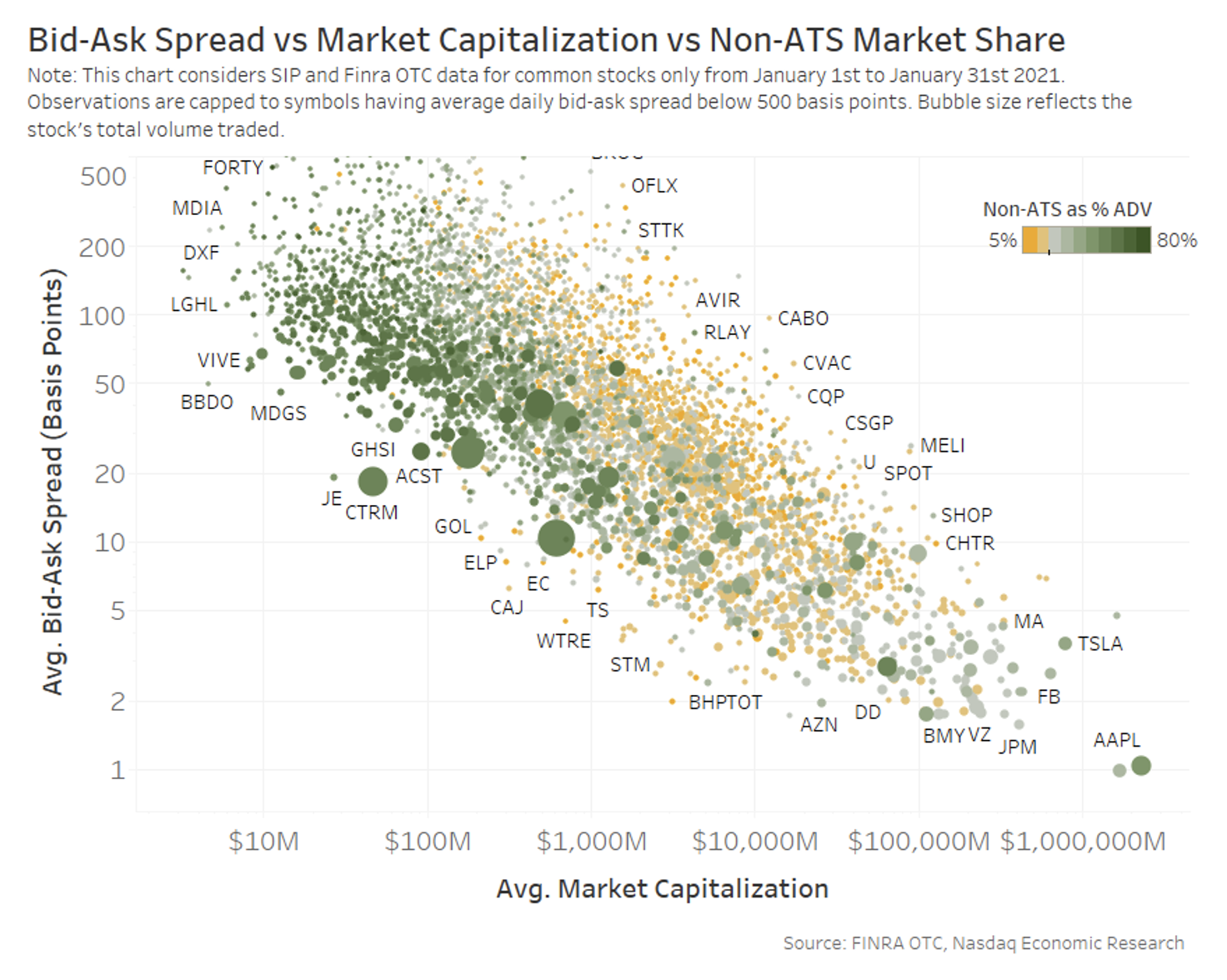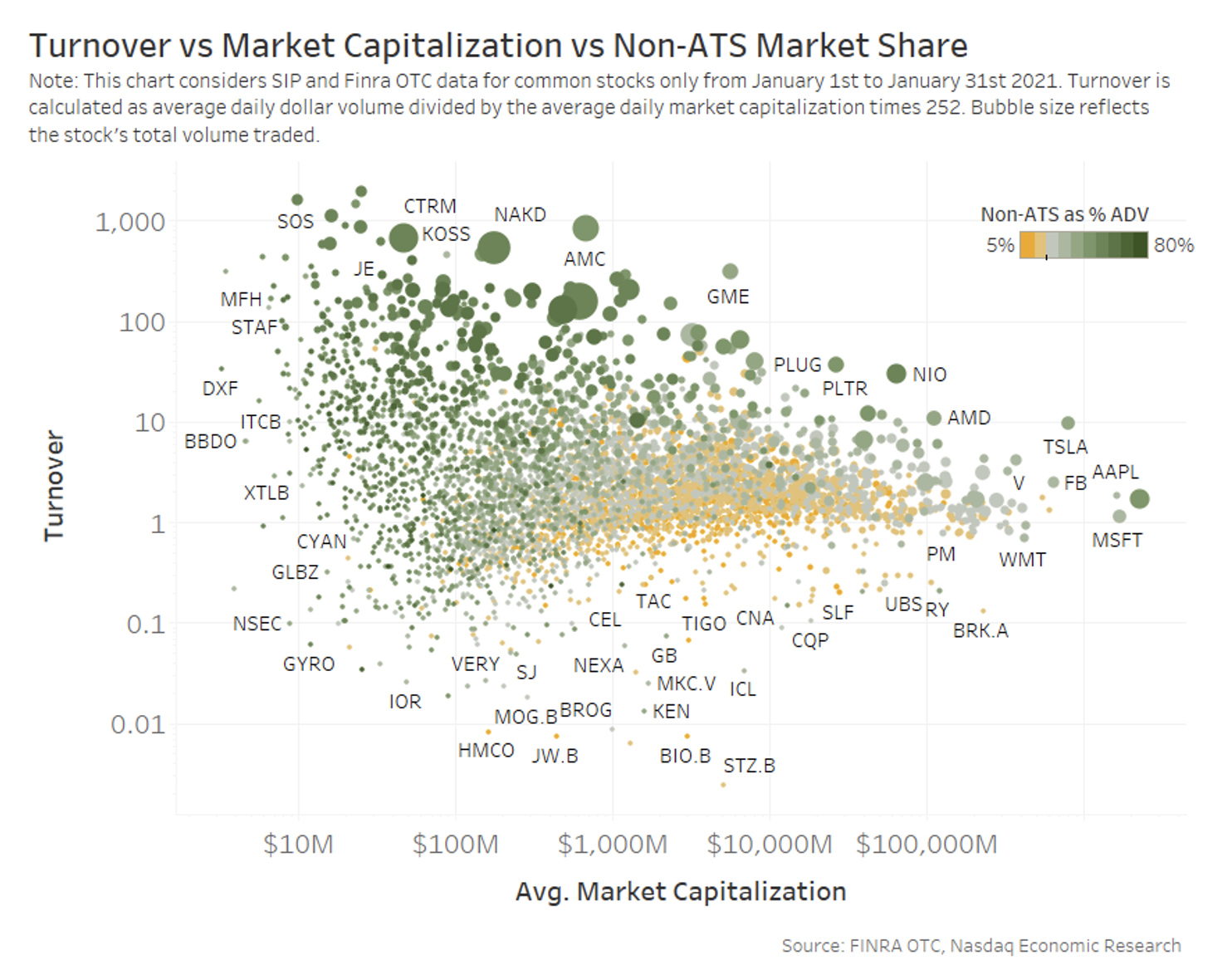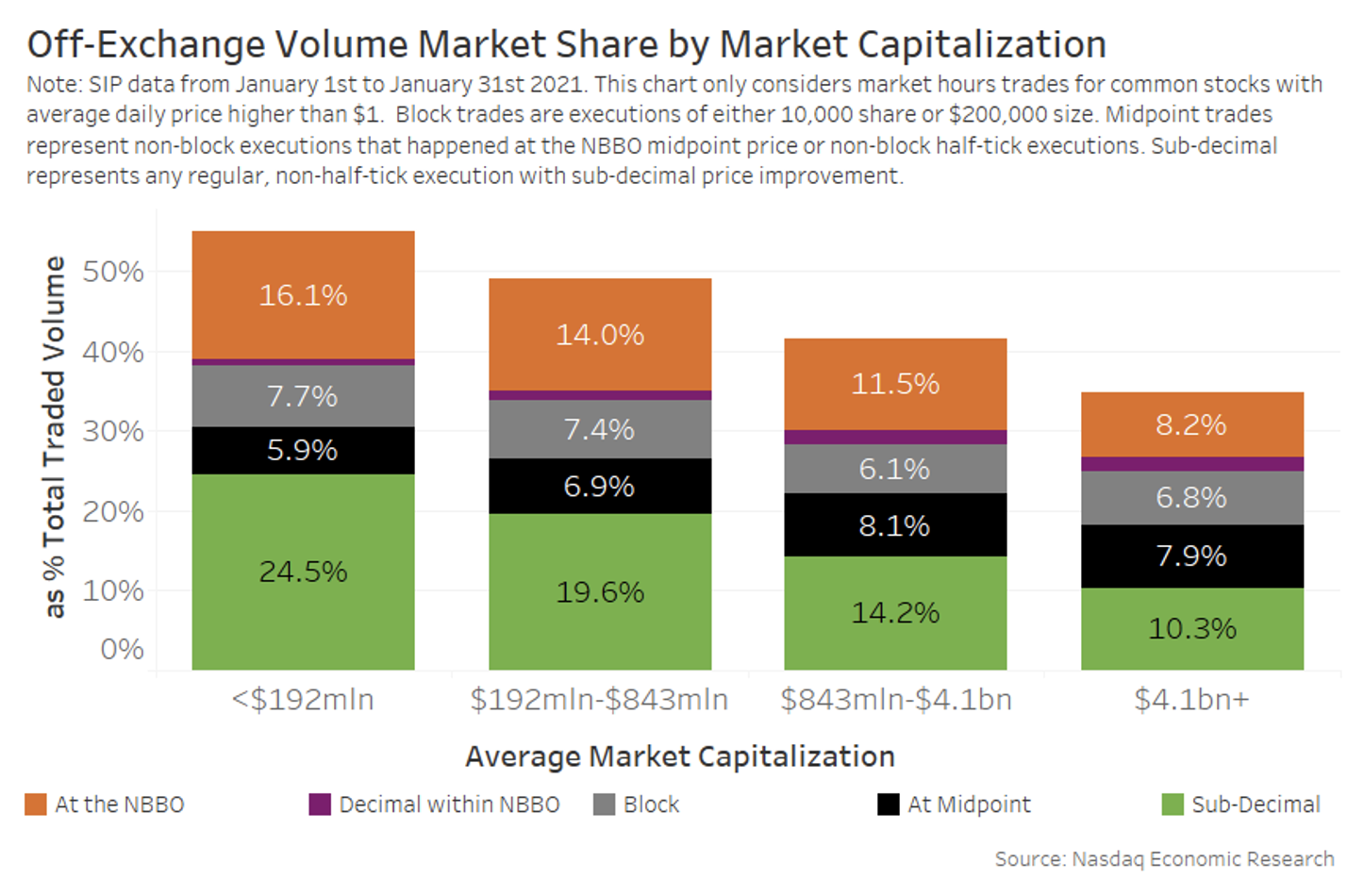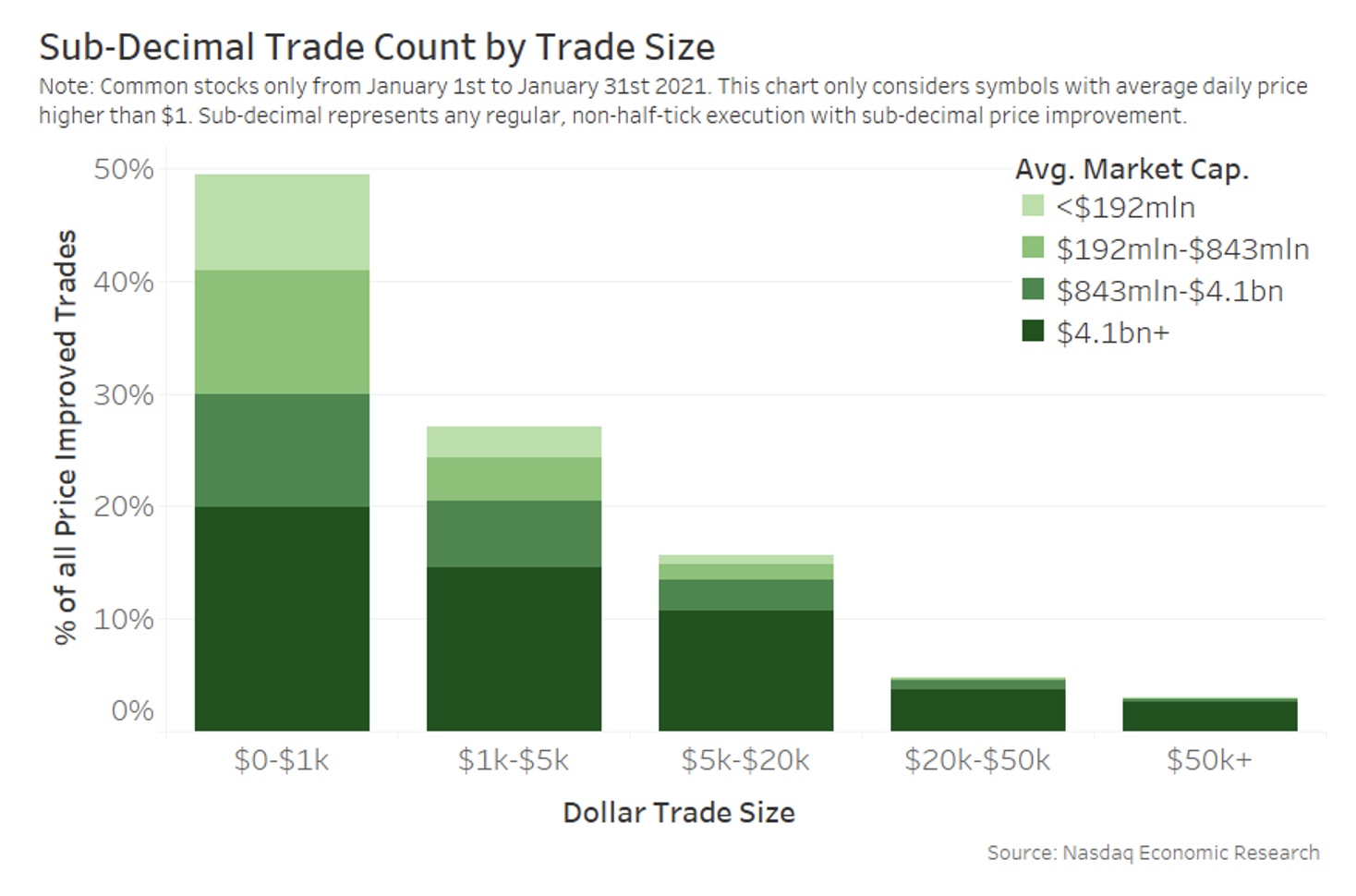
A Deep Dive into Dark Trades
Our industry has seen much discussion about the growth of retail trading since 2019. We have also seen off-exchange trading rising to more than 50% of all shares traded on some days.
Let’s take a deeper dive into this subject.
Off-exchange growth is mostly wholesalers
Looking at the detailed FINRA Trade Reporting Facility (TRF) data, we see that the two factors are almost certainly linked.
In Chart 1, we see that the wholesalers (green color) have accounted for more than 100% of the increase in the (off-exchange trades) TRF. Given we know how retail trades, this supports the fact that retail trading has also become a more significant contributor to market liquidity.
Dark pools are, in fact, down slightly over the same period.
Chart 1: Growth in off-exchange has increased during 2020

Wholesalers dominate popular stocks and microcap stocks
Looking at the FINRA data just for non-ATS-TRF trades (green and blue from Chart 1), we see that trading is far more concentrated in micro-cap names (green dots concentrated on the left of Chart 2). Many of those green tickers are trading as much as 80% of their average daily volume (ADV) off-exchange.
The diagonal slope of the dots also shows that smaller-cap stocks tend to also have the widest spreads in the lit market.
Small-cap shares also typically have lower share prices. The concentration of non-ATS-TRF trading in small-cap names therefore exaggerates the proportion of shares traded off-exchange. We calculate that the proportion of shares traded off-exchange in January 2021 was 47%, but the proportion of value trading off-exchange was 40%.
Chart 2: Non-ATS-TRF is more concentrated in microcap stocks, which tend to have wider spreads

However, a number of larger-cap stocks also see high proportions of “retail” trading. Many of these are tickers belonging to strong brand names like AAPL, MSFT, TSLA, FB and AMD.
Interestingly, plotting this exact same data versus turnover (on the vertical axis, instead of spreads) shows that the “high retail” large-cap names also tend to have significantly elevated turnover. That has implications for algorithms, as a recent study also found. If the shares trading (ADV) in these large-cap stocks includes a lot of trades that algorithms are not able to access, it will make algos trade faster and signal more than mutual fund investors think.
Chart 3: High retail large-cap stocks also tend to have elevated turnover vs. other stocks

What prices do stocks trade off-exchange?
Reg NMS prohibits sub-penny orders on exchanges and dark pools, except for midpoint orders on odd spreads. Furthermore, we know from Rule 605 data that the majority of retail marketable (spread crossing) orders receive price improvement. Therefore, looking at the prices each off-exchange trade prints to the tape is another way to confirm the size of retail trading.
Chart 4 shows us:
- At-the-NBBO executions are the second largest component in our sample. These include trades that exchanges could often price improve.
- Midpoint and Blocks are typically institutional traders and add to around 20% of trading volume off-exchange.
- Sub-decimal, a proxy for retail liquidity taking trades, represents off-exchange fills that are price improved to non-decimal and non-mid-point prices. This adds to around one-third of all trading volume off-exchange.
- Decimal within the NBBO executions are also price improved, but are at legal (decimal) order resting prices. This is a small component, but could represent resting limit orders with adverse selection in dark pools, or price-improved fills against decimal hidden orders.
We also see a trend across the buckets in Chart 4, showing that off-exchange price improved (retail) grows as market cap shrinks. Chart 2 shows those stocks are also usually already trading with wider spreads, thinner liquidity and worse market quality.
Chart 4: Retail fills are more common in low-priced stocks

Retail trades are mostly very small
Looking at just the sub-decimal trades (green area from Chart 4), we see how large retail trades usually are.
The results show retail trades are typically very small relative to average equity orders. More than 92% of the orders are for less than $20,000, with the average order being about $8,000. That’s mostly true even as stock prices rise, which is also consistent with some of the odd lot trends we saw last week.
Chart 5: Retail trades are usually smaller value

Shining some light on dark trading
Dark trading is typically very customized. Prices, investor tiers and execution quality vary depending on how you trade. So what are other investors missing?
By breaking down off-exchange trades data, two important things we can see is that:
- The majority of sub-decimal retail orders are very small (in dollars) and are concentrated in smaller-cap stocks (which also have the widest spreads).
- A high proportion of off-exchange trades are also done at the NBBO, even though there may be better prices hidden on exchanges.
That’s very different from how exchanges work. Exchanges are required to provide equal access to all. They’re required by Reg NMS Rule 612 to quote and trade in decimal price levels. While exchanges are not permitted to operate with the same flexibility, it is the exchanges that set the boundaries and the reference prices used to execute significant volumes of off-exchange trading.
